Today we are going to check out one of most historic (but also one of the coolest!) areas of Paris – the Marais. Refined 16th century mansions, peaceful gardens, Jewish delicatessens, ultra-trendy boutiques and the lively gay district show the great range of the Marais which has something for everyone!
Paris Neighborhood Video Tour: Le Marais – Part 1 (6:16)
History and Landmarks
The Marais, the French word for ‘marsh’, is located north of the Seine, sandwiched between Place de la Bastille, Place de la Republique and Les Halles. Its swamp lands were drained in the mid-1500s and the area was quickly bought up by aristocrats to build their elegant city mansions or hotels particuliers. The area was abandoned in the 18th century when the nobles started gravitating towards the west of the city. The Marais would have seen the wrecking ball if it hadn’t been for a campaign led by the Minister of Culture, Andre Malraux, in the 1960s to save the area’s heritage. Today the Marais is one of the loveliest and trendiest areas of Paris.
Oldest Houses in Paris
You can spot two half-timbered houses hidden behind the busy rue de Rivoli at number 44 rue Francois Miron. Dating from the 14th century, these are the oldest homes in Paris. The building facades were plastered over in 1607 in compliance with a citywide ban on wooden houses and were only ‘re-discovered’ in the mid-20th century, a lucky find for their surprised owner!
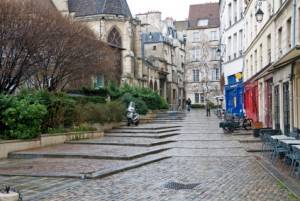
Just to the north of rue de Rivoli and east of rue Saint Paul is one of the nicest of the Marais Renaissance mansions, the Hotel de Sully. Built in the 1620s, it was acquired in 1634 by Louis XIII’s Superintendent of Finance, the duc de Sully, giving the mansion its current name. Stepping into the courtyard, admire the beautiful base-relief sculptures on the upper walls. On the left and right walls the sculptures represent the four elements: water, earth, air and fire. The ones above the door depict autumn and winter, and when heading into the back garden, you can spot spring and summer. Crossing this peaceful paradise of gardens, you can reach Place des Vosges through a secret doorway.
Place des Vosges
Place des Vosges is most certainly one of the most beautiful places in Paris. Finished in 1612, it was commissioned by Henri IV to give crowded Paris a proper public square and it became the model for squares all over Europe. The King and Queen’s pavilions are located opposite each other on the north and south ends. Around the square are 36 attached town houses built for the leading aristocrats of the era.
Place des Vosges has had its share of famous residents, including Victor Hugo, whose home is now a museum in his honor; found at number 6. It’s free so you can pop in to learn a little more about the French writer.
Not everyone can afford to stay in Place des Vosges, but if you’re looking to save money, consider renting a furnished vacation rental in Paris. You’ll get more space for your money and cooking at home will save you even more.
For example, we have this charming fully furnished 1-bedroom apartment (PA-2571) which is centrally located, less than one block from Place des Vosges. The apartment is situated on the second floor of a walk-up building and features wall to wall carpeting and access to a small, street side balcony. The bedroom is furnished with a queen sized bed and there is a double sized sofa bed in the living room for further sleeping accommodations.
Here is another furnished 1-bedroom Paris apartment (PA-2281) within walking distance of Place des Vosges. This accommodation is on the 3rd floor of a walk-up building and the aesthetics of this apartment feature a stone wall and exposed ceiling beams. The apartment has a fully equipped kitchen so guests can prepare meals in the apartment and also has the convenience of a washer and dryer in the apartment!
The Old City Wall – corner of rue Charlemagne and rue des Jardins Saint Paul
You can continue to track medieval Paris just off of rue Charlemagne where you can see the largest stretch of the old city wall. The wall was built in the 1180s by King Philippe-August to protect against Viking invasions. Today it’s a backdrop for basketball games and soccer matches.
The Museum of Arts et Métiers
The museum of Arts et Métiers was founded in 1794. Inside you will find a fantastic collection of scientific instruments and inventions from the 19th and 20th centuries.
Village Saint Paul
Across the street from the old wall, take one of the open passages and you’ll find yourself in another world – the magical Village Saint Paul. A series of courtyards between the rue Saint Paul and the rue des Jardins Saint Paul, here you can peruse dusty antique shops, design boutiques, some art galleries or stop for a glass of wine one of the cool cafes. It’s the perfect break from your stroll in the Marais.
Musee Carnavalet – 23, rue de Sévigné
If you’re looking for a bit of culture and history, stop in at the Musee Carnavalet, yet another beautiful private mansion, home to the museum of the history of Paris. Wandering its maze of rooms, you will travel through the ages of Paris from Roman times to the lively Belle Epoque era around the turn of the 20th century… and what’s more, the entrance is free! Don’t miss its gorgeous secret garden, which you can also access from rue Franc Bourgeois.
Well, I hope you’ve enjoyed our tour of the Marais. Of course, there’s a lot more to see and do here. If I’ve missed any of your favorite Marais secrets, be sure to share them with us in the comments box below.
If you liked this Video Tour, make sure to check the second part of our Video Tour of Le Marais in Paris!
Once a muggy swampland, now a Parisian hotspot, I hope to see you soon in the Marais!

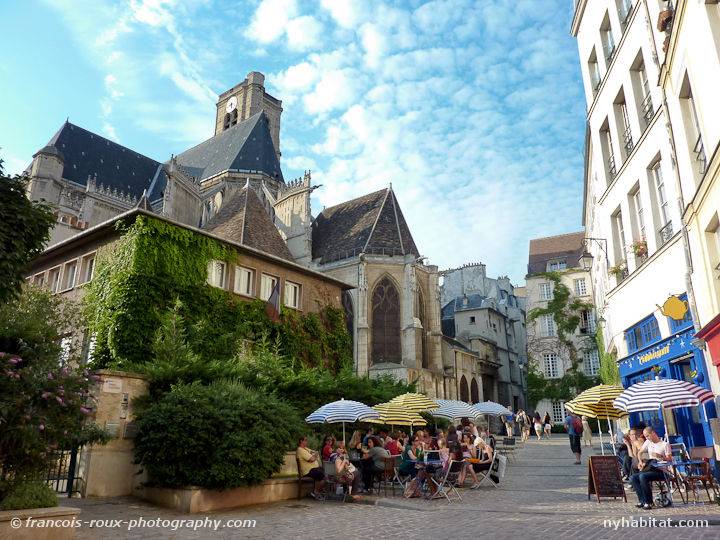
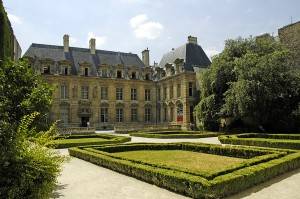

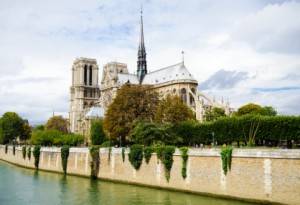
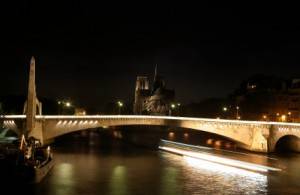
Leave a Reply